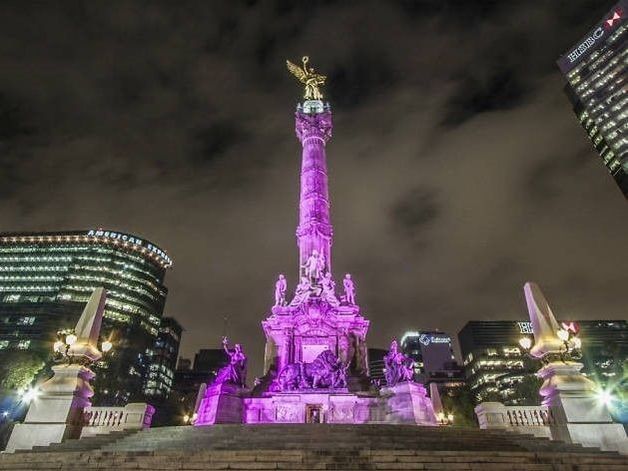Angel of Independence.
Rising to nearly 120 feet in the heart of downtown Mexico City, “El Angel” is one of the city’s most famous and important landmarks. It was erected to commemorate the start of Mexico’s War of Independence in 1810 and serves as the burial site of several heroes of the war.

Polanco.
Polanco is a modern, elegant, traditional, current and avant-garde neighborhood.
To date, Polanco is home to an important community of immigrants, mainly Jews, Spanish, Arabs and French, so it is not surprising to see the diversity in both its inhabitants and its establishments and to find in its restaurants specialized cuisines in addition to excellent international cuisine, or good gourmet shops.
Polanco represents the most cosmopolitan area that, lined with excellent restaurants, art galleries and shopping centers, welcomes visitors.
In Polanco are the main museums (The Museum of Anthropology, Tamayo Museum or Museum of Modern Art, Siqueiros Museum) and represent the protection and pride of Mexico.

Chapultepec Castle & Anthropology Museum.
Chapultepec Castle is one of the best museums in the city, it is a place with as much history as the museum it is home to. Having been an imperial and presidential residence, it is one of the places with the best views of the city.
The castle houses the National History Museum. Located at the top of Cerro del Chapulín, it is one of the most important points of the city since the thirteenth century.

The most visited museum in all Mexico, the National Museum of Anthropology (Museo Nacional de Antropología, MNA) is a must see for visitors from around the world. Here’s just the briefest of introductions.
Between 1940 and 1960, an intense intellectual movement flourished. It sought a Mexican identity based on the dignity of the very indigenous heritage that had long been looked down upon. This movement wanted to create a great museum to tie together all indigenous Mexican heritage, especially that gained through archaeology.
The collection dates back to 1790 when the Sun Stone was uncovered at the base of the Metropolitan Cathedral. The years that followed saw major works rediscovered: monumental sculptures of Coatlicue, the Tizoc Stone, and the colossal head of a Xiuhcoatl (the fire serpent). These finds fueled an increased interest in knowledge and the desire to protect this cultural heritage and its meanings.

The Magic of Mexican Lucha Libre
Lucha Libre is a sporting spectacle full of acrobatics and art, a narrative of a battle between good and evil, between heroes and villains.
Characterized by colorful masks, flamboyant personalities and a whole, it’s an edge-of-your-seat spectacle like no other and something that shouldn’t be missed.

Tequila and Mezcal museum, Plaza Garibaldi.
The Lucha Libre is part of Mexico City’s cultural heritage. It is an art that transcends sport, capturing the imagination of generations and reflecting Mexico’s popular culture in its characters and colors.
Lucha Libre events take place at the Arena México, this emblematic place is located in the Doctores neighborhood in the center of México City.
The Tequila and Mezcal Museum is located in the famous Plaza Garibaldi, it is dedicated to both spirits, Mariachi and the history of Plaza Garibaldi. With a large display of the drinks, it is also a restaurant and a shop. The museum operates the most lively bar of all the museums in Mexico City.
It organizes different tours in the surrounding areas, so this is a great way to get to know the culture and tradition of the lesser-known part of the Historic Center.
Plaza Garibaldi
Today, this plaza is famous for its nightlife. It is one of the few places where drinking alcoholic beverages outdoors is allowed in Mexico. It is a place to go after a party and hire the many musicians there. This plaza dates back to pre-Hispanic times, located in the lagoon that was between Tenochtitlán and Tlatelolco.
In the poor part of the city, the lagoon was drained and turned into a market in colonial times. Called the Plazuela de Jardín in 1871, its name changed to Plaza del Baratillo. It took this name because many second-hand products were being refurbished in the 19th century. Today, what remains of this market is known as the Tianguis de La Lagunilla.
In 1921, the name was changed in honor of Giuseppe Garibaldi II, “Peppino.” Grandson of the Italian hero who unified Italy and fought in Brazil and Uruguay, Peppino fought in the lines of Madero’s army in the Mexican Revolution.
In 1923, the plaza hosted the Salón Tenampa, originally from Jalisco, the owner of which introduced mariachi music to the city along with Jalisco food and the tradition of tequila.


